Understanding Landscape Paintings through BenodeBehari’s depictions of Santiniketan
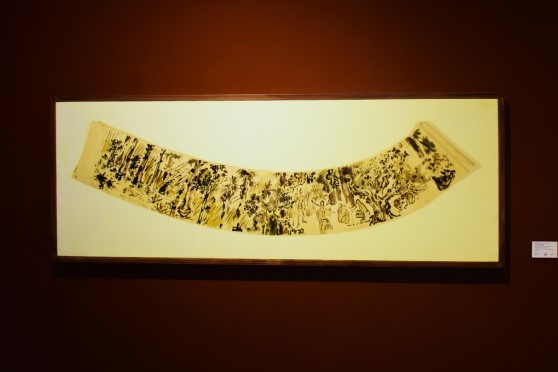

An artist’s ‘self’ can be perceived in his art. The soliloquy of the Padma Vibhusan awarded painter BenodeBehari Mukherjee is evident in his illustrated landscapes. The exhibition- ‘Scenes from Santiniketan & BenodeBehari’s Handscolls’ curated by R Siva Kumar, being displayed at Kolkata Centre for Creativity (KCC) in collaboration with Gallery Rasa, maps the artist’s lone journey. It seamlessly reveals the mind and character of BenodeBehari. One can interlink his emotions and intellect with nature, solitude, self-expression and art.
The visually impaired artist made art his solace since childhood. He was one of the first students of Kala Bhavana in Santiketan. Using East Asian formats of handscrolls, he articulated his ‘epic vision and intellectual power’ illustrating the locales of Santiniketan. Though BenodeBehari’s artwork featured indigenous effects and motifs, they also depict a visual transit from the traditional to the modern style of painting.“BenodeBehari was extremely careful and reflective in the quest of finding himself within a deep sense of tranquil trauma. While overcoming his identity crisis about the shortcomings of his sight, he understood the psyche of the landscape not just by appreciating it, but also mirroring him within nature.” expressed Prof. Chhatrapati Dutta, Principal of Government College of Art & Craft, Calcutta.
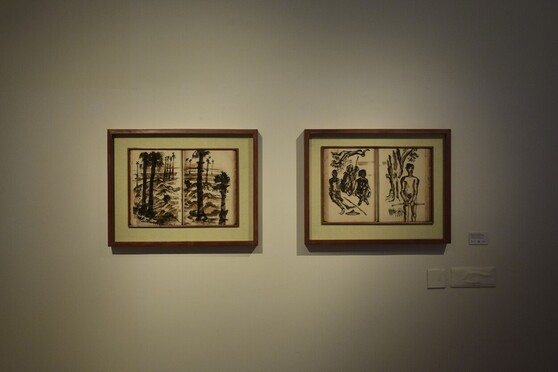
KCC further explored BenodeBehari's artistic orbit by organising a series of discussions and visual presentations on 10 June 2023. The evening at KCC highlighted the importance of the discipline of Art History. The discussions delineated the unseen aspects of human behaviour. His written letters explore his journey and perception arising out of his significant visual impairment. They further elaborate his political instincts and ideology. The discussions ended with a philosophical and societal analysis of the artist's expansive body of work.
Understanding the Landscape: The Nuances of Geography Unexplored
The typical tradition of drawing landscapes in the subcontinent contradicted aesthetic factors of pleasure and romanticism. Landscapes were used behind human storytelling, which had no subjectivity, almost like an object or a backdrop of a narrative. BenodeBehari’s vivid long landscape illustrations humanised the natural elements, enhancing the objectivities of local lacunae.
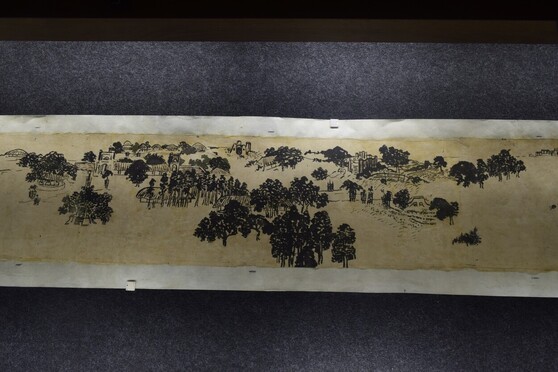
Prof Siva Kumar’s presentation on ‘Landscape and the Artist’s Self’ detailed BenodeBehari’s landscapes. They hold effective influences of Chinese and Japanese forms of landscape paintings, such as the works of the Japanese painter, Sesshū Tōyō. BenodeBehari was very fond of Paul Cézanne’s landscapes too and appropriated Cézanne’s style in many of his paintings. He thereby created his unique pattern of visualising landscapes and wanted to create a ‘Landscape Gharana’ (meaning genre), as his grandson Dr Debasis Bhattacharya recounted from the letters BenodeBehari wrote to him. The interactive session by Art Critic Uma Nair with Prof Siva Kumar emphasised the botanic brilliance that can be seen in his paintings in the pattern of the colours on the petals and so on.“This exhibition and the wonderful talk by Prof. Shiv Kumar reminded one that art is important because it slows us down, drives us to ponder, to watch with admiration and interest what an extraordinary world we inhabit. His brush strokes may have been minimalist but his field of vision was maximalist,” Prof Niladri Chatterjee shared with Edugraph while visiting the exhibition.
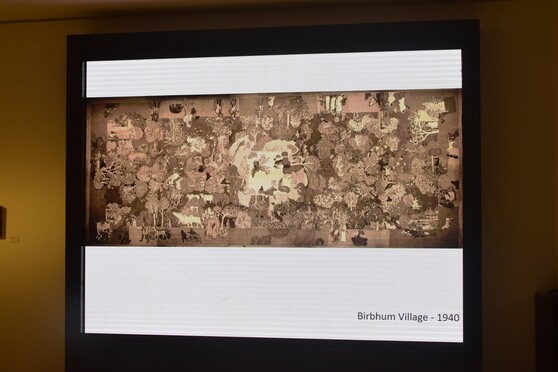
The Grinding Path of Loneliness…
Dr Bhattacharya divulged how BinodeBehari always wanted to seclude himself from the limelight. BinodeBehari’s intrepid solitude was his politics of art. His self-images are chronic examples of how he endured his solitude and never promoted it. BinodeBehari’s self-effacing tendencies are recognised as a symbol of modern impressionist art. The viewers can create their own narrative exploring the self through it.
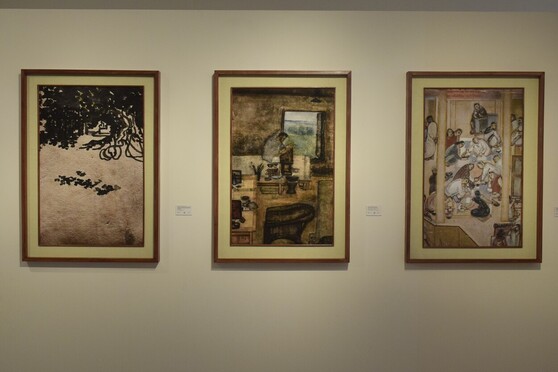
He never saw his paintings just as mere forms of representation, but as an expression of his personal vision, poured out of memory or experience. For instance, BinodeBehari compares his character with the contours of Khoai-undulating eroded laterite earth mostly found in the dry regions of Birbhum district. “If you wish to look for my spirit, the basic essence of all that my life stands for, you will find it there. You could say, I am it!” He was talking about Khoai (as ‘it’) in ‘The Inner Eye’, a documentary by Satyajit Ray based on his life.

Art is for all, irrespective of impediments. BenodeBehari proved it. Art has the ability to develop and diversify our conscience, and make us see beyond what is apparent. Many of his works are yet to be discovered and most of his narratives and innate observations are still unheard of, which might intrigue forthcoming art historians to dig it out.
The exhibition ‘Scenes from Santiniketan & BenodeBehari’s Handscolls’ curated by R Siva Kumar, is being displayed at Kolkata Centre for Creativity (KCC) till 20 Jun 2023.
Check out other snapshots from the exhibition here.